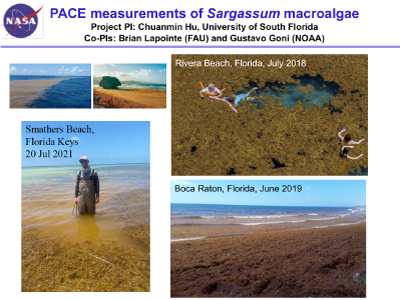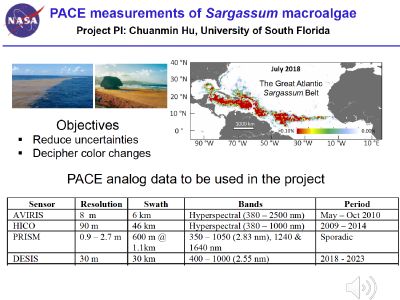People

ROSES Proposals
Applied Research Topic
Various types of floating macroalgae and floating microalgae have been reported in global oceans and lakes, including Ulva, Sargassum, Noctiluca, cyanobacteria (e.g., microcystics, Trichodesmium), among others. While detecting them using multi-band sensors (e.g., MODIS, VIIRS, OLCI) is possible with some a priori knowledge of the local environment, fingerprinting their types spectrally is more difficult. The hyperspectral capacity of PACE should make it possible to perform spectral diagnostics of their unique spectral features due to various pigment absorptions and backscattering properties. Through using simulated data and data collected by prototype sensors (HICO, DESIS, etc), the project will develop algorithm for spectral discrimination of floating algae and organisms/materials for the regions of the eastern Gulf of Mexico, Florida Straits, and South Atlantic Bight. In addition to floating algae, other floating organisms or materials (e.g., oil slicks, pumice rafts, large plastic patches) can also be identified spectrally through PACE measurements.Significance
Improved detection and species discrimination of floating algae can be used by Federal and state agencies such as the United States Environmental Protection Agency (USEPA) the Department of Environmental Protection (DEP), and the Department of Health (DOH) to prepare mitigation efforts for macroalgae and cyanobacterial blooms. Further, this information can be helpful for coastal resource managers to prepare mitigation efforts for massive macroalgae beaching events. Lastly, boaters and beach goers can indirectly benefit from detection and discrimination of floating algae through increased awareness and improved ecological planning.Why PACE
PACE has enough spectral bands in the 380 - 1000 nm spectral region and in the shortwave infrared spectral region (1.2 and 1.6 μm) to spectrally differentiate and quantify various types of floating algae and organisms/materials. The hyperspectral capacity of PACE should make it possible to perform spectral diagnostics of their unique spectral features due to various pigment absorptions and backscattering properties.End User(s)
Florida Fish and Wildlife Conservation CommissionUS Environmental Protection Agency
Ocean Ecologists & Researchers
Publications
Hu, C. (2009). A novel ocean color index to detect floating algae in the global oceans. Remote Sens. Environ. 113 :2118 :2129, DOI: https://doi.org/10.1016/j.rse.2009.05.012.
Hu, C., D. Li, C. Chen, J. Ge, F. E. Muller-Karger, J. Liu, F. Yu, and M-X He (2010). On the recurrent Ulva prolifera blooms in the Yellow Sea and East China Sea. J. Geophys. Res. 115, C05017, DOI: 10.1029/2009JC005561.
Qi, L., C. Hu, K. MIkelsons, M. Wang, V. Lance, S. Sun, B. B. Barnes, J. Zhao, and D. V. der Zande (2020). In search of floating algae and other organisms in global oceans and lakes. Remote Sens. Environ., 239, 111659, DOI: https://doi.org/10.1016/j.rse.2020.111659.
Read about an Early Adopter project that is related to Chuanmin Hu's SAT work ►
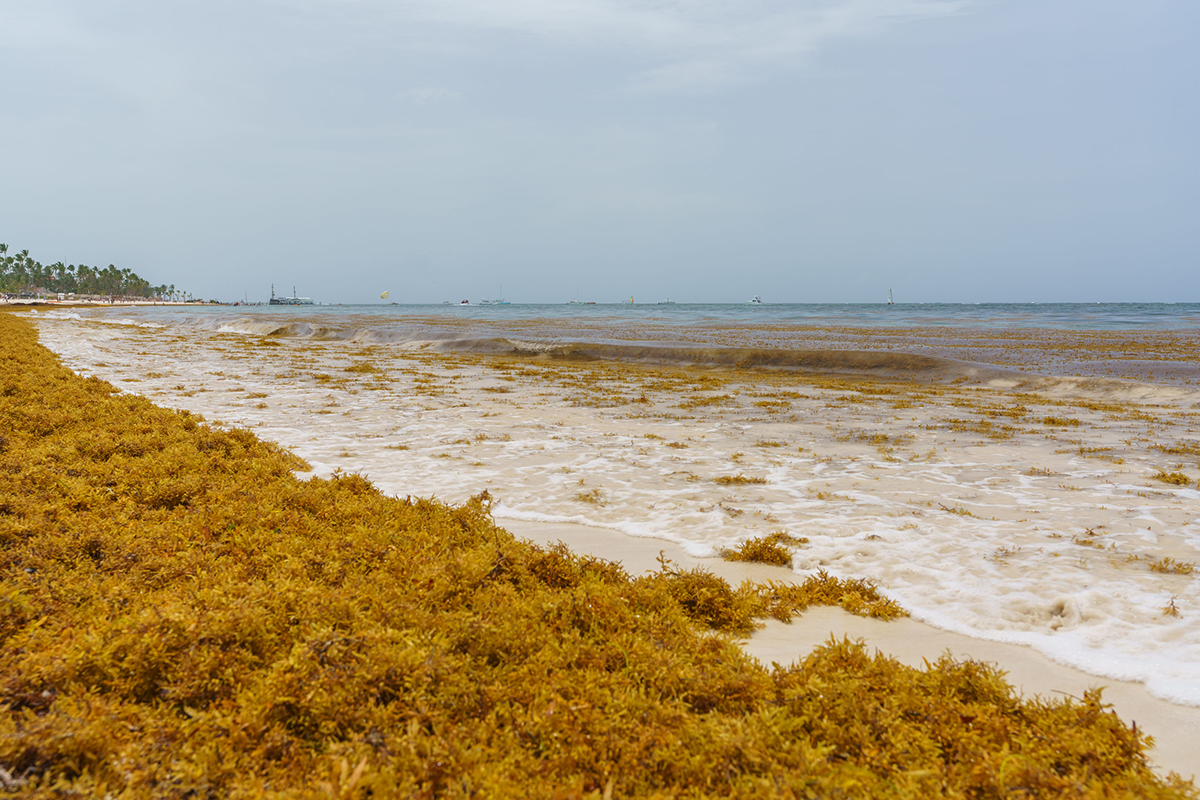
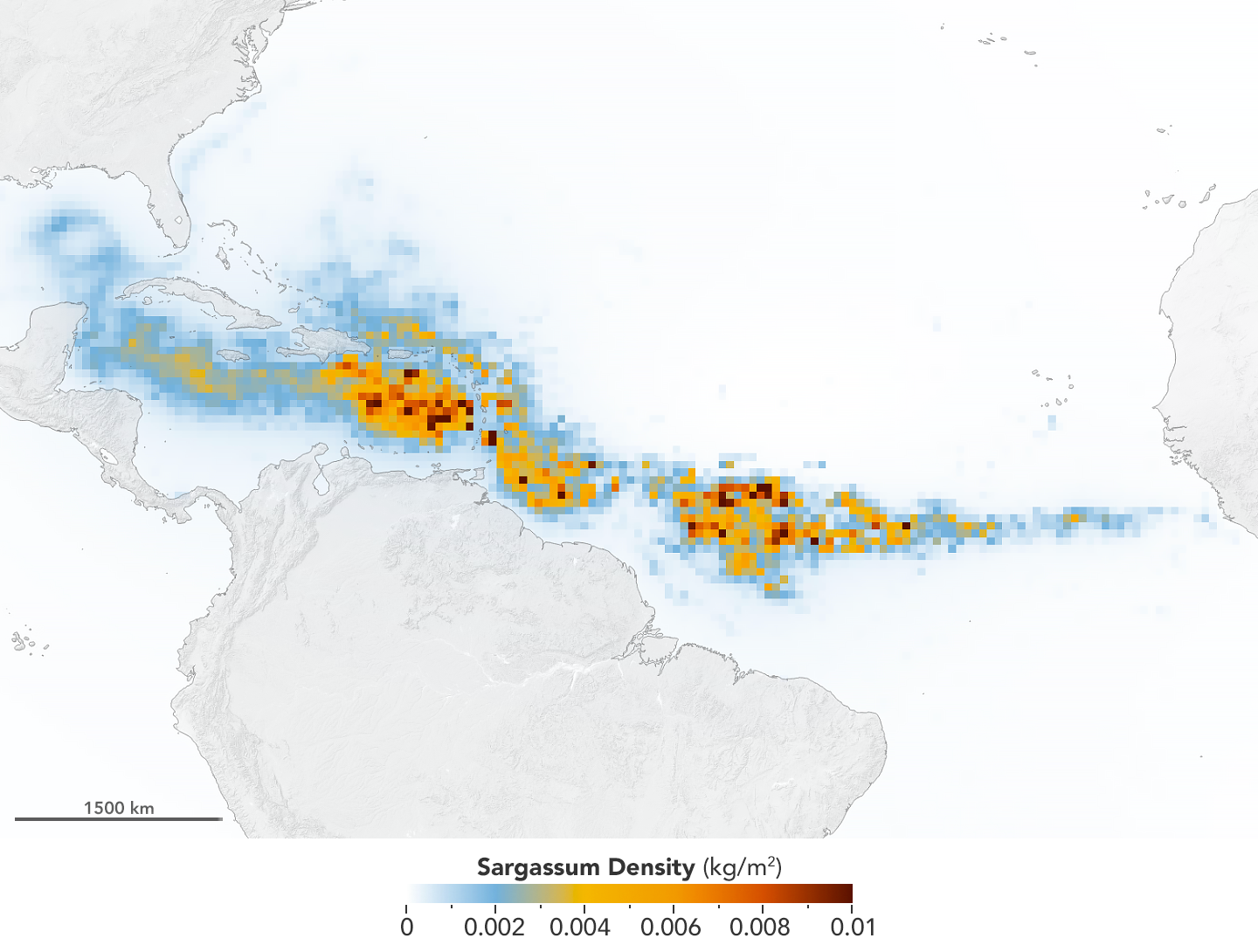
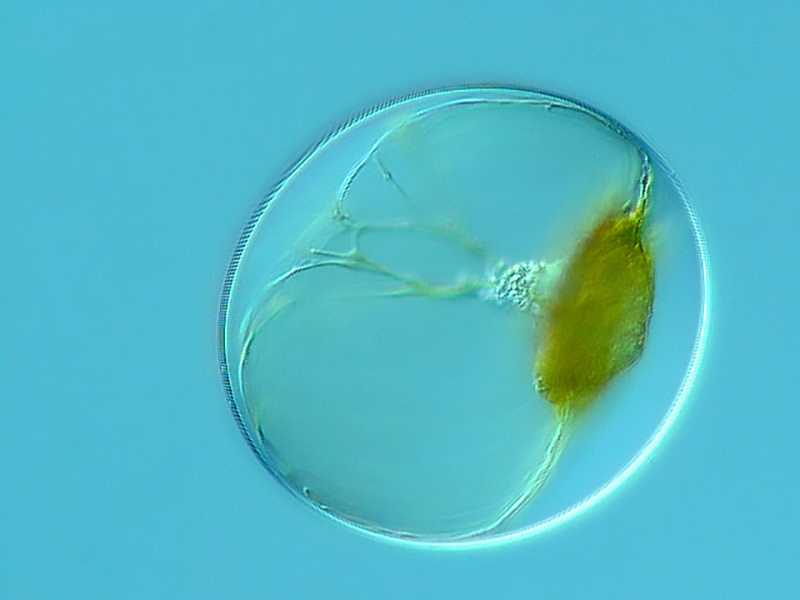
Science Meeting Presentations (4)


